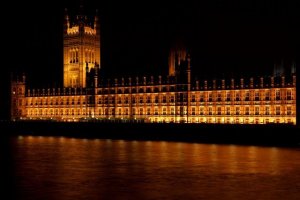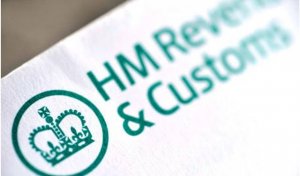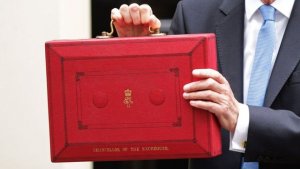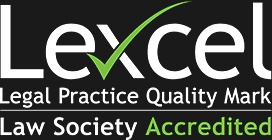- Private Wealth

Shorter Reads
Gifting up a Generation
How can a child gift property to their parents without causing Inheritance Tax issues further down the line?
1 minute read
Published 12 January 2022
Key information
- Specialisms
- Private Wealth
- Services
- Private Wealth
A scenario frequently encountered is where a client has accumulated significant wealth during his or her lifetime and wishes to care for elderly relatives – often parents – but without triggering IHT on their deaths. It is a particular issue when someone wants to provide his or her parents with residential accommodation.
The issue
The issue is that simple gifts by a wealthier child to his or her parents might be the worst of all worlds. This is because they would be Potentially Exempt Transfers (“PETs”) for IHT for the child, meaning that IHT would be triggered at 40% in the event of his or her own death within the following seven years. Perhaps worse still, they would also add taxable assets to the parents’ IHT estates, ensuring a further charge of 40% in the event of their deaths.
Non-solutions
Simple solutions might be thought to include making repayable loans to the parents, or making assets (such as residential property) available to them but without actually transferring the assets to them outright.
However, these apparent solutions would cause other difficulties: first, following a change in the law in 2013, any loans would need to be repaid from the parents’ estates to avoid IHT being chargeable, and funds might not be available to make the repayments. Secondly, if property is owned by a child but occupied by the parents, whilst IHT would avoided on the parents’ deaths, the acquisition would be subject to the supplemental 3% SDLT charge for second properties. Additionally, CGT – at the higher rate of 28% – would apply in due course when the property is sold, with no “main residence” relief available for the parents’ occupation.
Similarly, it has been unattractive to make lifetime trusts in most cases since a 2006 change in the law, as a 20% IHT entry charge will apply to amounts exceeding the available Nil Rate Band (typically £325,000).
The solution
In appropriate cases, it would be possible to create a new purpose-made trust with a nominal amount (£10, for example). A loan could then be made to the trustees to enable them to purchase property for the parents to use. This would have the following consequences: (1) the nominal sum creating the trust would theoretically be subject to IHT unless within the Nil Rate Band; (2) the loan to the trustees would trigger no IHT, though it would remain an asset of the child (and so be within his or her IHT estate); (3) none of the assets would be within the parents’ IHT estates; (4) no IHT periodic charges (e.g. on every 10th anniversary of the trust’s creation) would apply to the amount of the loan; (5) the parents would be able to occupy/use the property owned by the trustees; (6) the higher rate of SDLT ought not to apply to the acquisition of the property; (7) The CGT “main residence” exemption would apply in the case of residential property owned by the trustees (albeit subject to the loan) and occupied by the parents.
As a result, this solution will achieve the commercial objective of the child and his or her parents, of enabling the parents to occupy property, but without the tax disadvantages of the non-solutions referred to above.
Read our latest article in this series: Lifetime giving: Can I give my home to my children (and still live in it)?
Related content
Shorter Reads
Gifting up a Generation
How can a child gift property to their parents without causing Inheritance Tax issues further down the line?
Published 12 January 2022
A scenario frequently encountered is where a client has accumulated significant wealth during his or her lifetime and wishes to care for elderly relatives – often parents – but without triggering IHT on their deaths. It is a particular issue when someone wants to provide his or her parents with residential accommodation.
The issue
The issue is that simple gifts by a wealthier child to his or her parents might be the worst of all worlds. This is because they would be Potentially Exempt Transfers (“PETs”) for IHT for the child, meaning that IHT would be triggered at 40% in the event of his or her own death within the following seven years. Perhaps worse still, they would also add taxable assets to the parents’ IHT estates, ensuring a further charge of 40% in the event of their deaths.
Non-solutions
Simple solutions might be thought to include making repayable loans to the parents, or making assets (such as residential property) available to them but without actually transferring the assets to them outright.
However, these apparent solutions would cause other difficulties: first, following a change in the law in 2013, any loans would need to be repaid from the parents’ estates to avoid IHT being chargeable, and funds might not be available to make the repayments. Secondly, if property is owned by a child but occupied by the parents, whilst IHT would avoided on the parents’ deaths, the acquisition would be subject to the supplemental 3% SDLT charge for second properties. Additionally, CGT – at the higher rate of 28% – would apply in due course when the property is sold, with no “main residence” relief available for the parents’ occupation.
Similarly, it has been unattractive to make lifetime trusts in most cases since a 2006 change in the law, as a 20% IHT entry charge will apply to amounts exceeding the available Nil Rate Band (typically £325,000).
The solution
In appropriate cases, it would be possible to create a new purpose-made trust with a nominal amount (£10, for example). A loan could then be made to the trustees to enable them to purchase property for the parents to use. This would have the following consequences: (1) the nominal sum creating the trust would theoretically be subject to IHT unless within the Nil Rate Band; (2) the loan to the trustees would trigger no IHT, though it would remain an asset of the child (and so be within his or her IHT estate); (3) none of the assets would be within the parents’ IHT estates; (4) no IHT periodic charges (e.g. on every 10th anniversary of the trust’s creation) would apply to the amount of the loan; (5) the parents would be able to occupy/use the property owned by the trustees; (6) the higher rate of SDLT ought not to apply to the acquisition of the property; (7) The CGT “main residence” exemption would apply in the case of residential property owned by the trustees (albeit subject to the loan) and occupied by the parents.
As a result, this solution will achieve the commercial objective of the child and his or her parents, of enabling the parents to occupy property, but without the tax disadvantages of the non-solutions referred to above.
Read our latest article in this series: Lifetime giving: Can I give my home to my children (and still live in it)?
Need some more information? Make an enquiry below.
Subscribe
Please add your details and your areas of interest below
Article contributor
James
AustenPartner
Specialising in UK trusts, tax & estate planning, Contentious trusts & probate, Private wealth and Tax disputes & investigations
Enjoy reading our articles? why not subscribe to notifications so you’ll never miss one?
Subscribe to our articlesMessage us on WhatsApp (calling not available)
Please note that Collyer Bristow provides this service during office hours for general information and enquiries only and that no legal or other professional advice will be provided over the WhatsApp platform. Please also note that if you choose to use this platform your personal data is likely to be processed outside the UK and EEA, including in the US. Appropriate legal or other professional opinion should be taken before taking or omitting to take any action in respect of any specific problem. Collyer Bristow LLP accepts no liability for any loss or damage which may arise from reliance on information provided. All information will be deleted immediately upon completion of a conversation.
Close




























































































